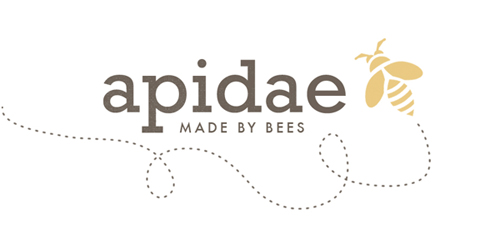All the hard work of my bees culminated in lots of oohs and ahhs as I harvested my first honey at home in the kitchen. From my two hives, I had about 11 full frames of honey. This gave me a total of 12 kg when all was said and done. woo hoo! But it was an all-day process getting to this liquid gold.
First, how to get the bees out of the honey super?! Don't forget to have an extra beehive box ready. I removed the frames from the honey super one by one, brushing the bees off as I went with a feather. You can also use a brush for this but the bees tend to get caught in the bristles. The feather seemed to work fine. This job is easiest done with two people as you need to quickly place a cover over the super where you are inserting the removed honey frames. Otherwise, bees and wasps will be in there in no time.

Once all of the frames are placed in the extra super, remove the queen excluder (if using) and the honey super. If however, you do not want to harvest all of the honey at once (which means double clean-up!), be sure to replace any frames you pull from the honey super with empty frames. Otherwise, the bees will begin to build rogue comb in the empty space.
It's best to extract the honey from the frames immediately while it's still nice and warm from the hive. I used an uncapping fork to remove the wax cappings from each frame. I also had a few frames of honey that weren't capped. Be sure that this honey has been cured before extracting it. If the water content is too high, the honey will ferment. Turn the frame downwards toward the floor and give the frame a good shake. If the honey does not leak out, then it is good to go. You can also measure the moisture content using a refractometer. The honey is ready for extraction with a reading of 16 - 18. If the moisture is higher, the honey will ferment. If it is lower, it will crystallize.
Insert the frames into the honey extractor (I was lucky enough to buy a used one from a former beekeeper) and everyone gets a turn at spinning the honey. You must flip the frames around to get the honey out of each side of the frame.
As soon as the honey in the extractor reached the bottom of the frame, open the spigot. I purchased a 25 kg plastic bucket with an attached honey gate valve. Place the bucket with a double filter directly under the spiggot.

Let the honey settle in the bucket for a few days before bottling. This allows any air bubbles to rise to the surface. A little bit of math is involved in figuring out how many jars you require for bottling the honey. A 230 ml jar will hold approximately 330 g of honey. I found this to be a nice size for gifting. Be sure to cap the bottles as you go to prevent air from entering the honey. If stored properly, honey has no expiration date! The jars must be tightly sealed as honey attracts moisture and moisture ferments honey.

Once you've extracted the honey from all the frames, you're left with a sticky mess. You can save these wet frames for the bees come Spring time. But being a bit of a neat freak, I returned the honey super full of wet extracted honey frames to the bees. About two days later, I removed the perfectly cleaned frames. Yes, the whole process of brushing the bees off of each frame needs to be repeated but I find it less daunting to store "clean" frames over the winter.
Now, what to do with all those cleaned up honey frames? Drawn out honey comb is a precious commodity that must be protected. Wax moths, mice, roaches and ants would all be happy to find a feast of beeswax filled with all sorts of nutrients. The surest method of keeping the wax moth at bay is to freeze the frames for 48 hours. This method kills any eggs lingering in the wax. Unfortunately, I don't have freezer capacity to fit even one of my frames. So I am going to place the honey frames in clear plastic containers. Use clear containers as the wax moths don't like sunlight. Also make sure that the containers seal tightly and don't have holes by the handles. I will store my bins in the garage (with a window). Any frames that had brood in them should really be frozen though before storing. The wax moths are after protein (no protein in honey). Honey frames are all light in color. Any frames that contained brood have much darker cells as shown in the photo below. If you must store frames in the super, be sure to place the box directly on the floor with a queen excluder on top to keep the mice away.
Time to clean up all of the extraction equipment. Don't use hot water as that just creates a sticky mess. I used cold water and cleaned everything in the bathtub on a mat, then laid the equipment outside in the sunshine to dry. Any spots I missed were cleaned up by some happy bees.

And remember, one jar of honey is the equivalent of three jars of nectar. An average worker bee makes only about 1/12 teaspoon of honey in its lifetime.




